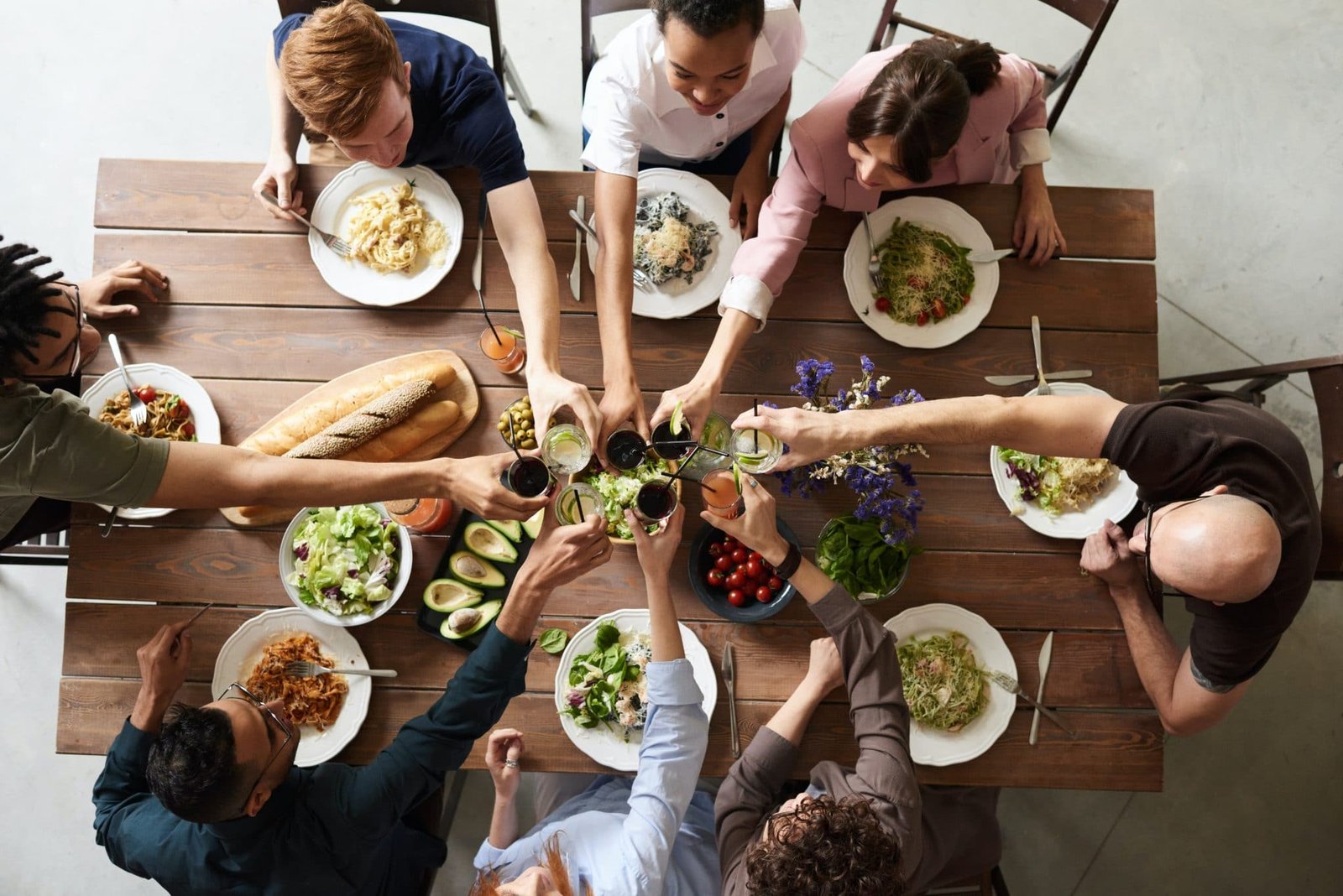In a world increasingly aware of environmental impacts, there’s a growing trend that combines sustainability with gastronomy. Welcome to the world of kipteitei, a concept that’s capturing the attention of eco-conscious consumers, sustainable living enthusiasts, and foodies alike. This blog post will unravel the allure of kipteitei, exploring its origins, the benefits it brings to the table, and how you can be part of this culinary revolution.
By the time you reach the end of this article, you’ll have a deeper understanding of what makes kipteitei so special, and why it deserves a place in your sustainable living practices and culinary adventures.
What is Kipteitei?
Kipteitei, a term that might be unfamiliar to many, is more than just a word—it’s a lifestyle choice. Rooted in the principles of sustainability and health, kipteitei encompasses a way of sourcing, preparing, and enjoying food that prioritizes ecological balance and minimal waste. It’s about choosing ingredients that are not only good for you but also gentle on the planet.
The philosophy of kipteitei is gaining momentum as people become more conscious of their consumption patterns. It encourages a mindful approach to eating, where every choice is an opportunity to make a positive impact. By focusing on local, organic, and seasonal ingredients, kipteitei champions the idea of eating in harmony with nature’s cycles.

The Origins of Kipteitei
To understand kipteitei, it’s important to explore its roots. The concept has its origins in ancient cultures that lived in harmony with their environment. By drawing from traditional wisdom, kipteitei emphasizes the importance of sustainable practices that benefit both individuals and communities.
Historically, communities that practiced kipteitei relied on what was available locally, making the most of each season’s offerings. This approach not only reduced the carbon footprint associated with transporting food over long distances but also supported local economies. In today’s globalized world, these age-old principles are being rediscovered as people seek more sustainable ways of living.
Kipteitei is a nod to the past, reminding us that modern conveniences should not come at the cost of environmental degradation. By adopting this approach, individuals can reconnect with their roots while contributing to a healthier planet.
Why Kipteitei Matters
In a time when environmental challenges are front and center globally, kipteitei offers a beacon of hope. By choosing to incorporate kipteitei principles into your lifestyle, you’re taking a stand for the planet and future generations. It’s a choice that reflects a commitment to preserving the earth’s resources and reducing waste.
One of the key benefits of kipteitei is its focus on local produce. By supporting local farmers and producers, you contribute to a more resilient food system. This reduces the need for long-distance transportation, which is a significant contributor to greenhouse gas emissions. Additionally, local produce is often fresher, tastier, and more nutrient-dense, as it doesn’t require extensive preservation.
Another advantage of kipteitei is its emphasis on seasonal eating. By consuming foods that are in season, you align yourself with natural rhythms, which can enhance your overall well-being. Seasonal foods are typically more flavorful and nutritious, offering a delightful dining experience that is both fulfilling and sustainable.
Kipteitei in Action
Putting kipteitei into practice involves making intentional choices at every step of your food journey. From selecting ingredients to cooking techniques, each decision plays a role in creating a more sustainable future. Here’s how you can start incorporating kipteitei into your culinary adventures.
First, consider joining a local community-supported agriculture (CSA) program. CSAs connect consumers with local farmers, providing fresh produce directly from the source. It’s an excellent way to support local agriculture while enjoying a wide array of seasonal fruits and vegetables. By participating in a CSA, you not only reduce your carbon footprint but also develop a deeper connection to your food and its origins.
Secondly, when shopping for groceries, prioritize farmers’ markets over supermarkets. Farmers’ markets offer a diverse selection of locally-grown produce, often cultivated using organic and sustainable methods. By buying from these markets, you contribute to the success of small-scale farmers and reduce the demand for products that require extensive packaging and transportation.
Finally, experiment with plant-based recipes that celebrate the bounty of each season. Kipteitei encourages you to explore the versatility of fruits, vegetables, legumes, and grains. By diversifying your diet and incorporating more plant-based meals, you reduce your environmental impact while nourishing your body with nutrient-rich foods.
Community and Kipteitei
One of the most remarkable aspects of kipteitei is the sense of community it fosters. By engaging in sustainable practices, you become part of a global movement dedicated to positive change. Sharing experiences, recipes, and tips with like-minded individuals can amplify the impact of your efforts.
Many communities host events and workshops centered around sustainable living and kipteitei principles. Participating in these gatherings can deepen your understanding of eco-friendly practices and provide opportunities to connect with others who share your values. Whether it’s a cooking class focused on seasonal ingredients or a sustainable farming tour, these experiences offer valuable insights into the world of kipteitei.
Social media platforms also serve as powerful tools for connecting with the kipteitei community. Joining online groups and following influencers who advocate for sustainable living can provide inspiration and motivation. These platforms allow you to share your own kipteitei journey, exchange ideas, and learn from others’ successes and challenges.
The Future of Kipteitei
The future of kipteitei is promising as awareness of environmental issues continues to grow. More individuals and businesses are recognizing the importance of sustainable practices and incorporating them into their daily lives. This shift is driving innovation and encouraging the development of new technologies and solutions that align with kipteitei principles.
In the coming years, we can expect to see an expansion of sustainable food options, from eco-friendly packaging to plant-based alternatives. The demand for locally-sourced and organic ingredients is likely to increase, prompting more farmers to adopt sustainable practices. Restaurants and food establishments are also likely to prioritize ethical sourcing and environmentally-conscious menu choices.
As consumers, we have the power to shape the future of kipteitei by making informed choices and supporting businesses that align with our values. By adopting kipteitei principles, we can collectively contribute to a more sustainable and vibrant world.
Kipteitei Recipes to Try
Ready to start your kipteitei culinary adventure? Here are a few simple and delicious recipes that embody the principles of sustainability and flavor.
Seasonal Vegetable Stir-Fry
Ingredients:
- 1 cup broccoli florets
- 1 cup sliced carrots
- 1 bell pepper, sliced
- 1 cup snap peas
- 2 tablespoons soy sauce
- 1 tablespoon sesame oil
- 2 cloves garlic, minced
- 1 tablespoon ginger, grated
Instructions:
- Heat sesame oil in a pan over medium heat.
- Add garlic and ginger, sautéing until fragrant.
- Add the vegetables and stir-fry for 5-7 minutes.
- Add soy sauce and toss to coat.
- Serve warm and enjoy the vibrant flavors of each season.
Farm-to-Table Salad
Ingredients:
- 2 cups mixed greens (spinach, arugula, kale)
- 1 cup cherry tomatoes, halved
- 1 cucumber, sliced
- 1/4 cup feta cheese, crumbled
- 1/4 cup walnuts, toasted
- 2 tablespoons olive oil
- 1 tablespoon lemon juice
- Salt and pepper to taste
Instructions:
- In a large bowl, combine mixed greens, cherry tomatoes, cucumber, feta cheese, and walnuts.
- Drizzle with olive oil and lemon juice.
- Season with salt and pepper.
- Toss gently and savor the freshness of locally-sourced produce.
Rustic Grain Bowl
Ingredients:
- 1 cup quinoa, cooked
- 1/2 cup roasted sweet potatoes
- 1/4 cup chickpeas, roasted
- 1/4 cup avocado, sliced
- 2 tablespoons tahini dressing
- 1 tablespoon chopped fresh herbs (parsley, cilantro)
Instructions:
- In a bowl, layer cooked quinoa, roasted sweet potatoes, chickpeas, and avocado.
- Drizzle with tahini dressing.
- Sprinkle with fresh herbs.
- Mix well and relish the nourishing goodness of whole grains and veggies.
Kipteitei and Sustainability
At its core, kipteitei is a celebration of sustainability—an acknowledgment that our choices have a profound impact on the environment and future generations. By adopting this approach, you join a community of individuals dedicated to creating a more harmonious and sustainable world.
Kipteitei encourages us to be mindful of our consumption patterns and to consider the lifecycle of the products we use. It’s about reducing waste, minimizing our carbon footprint, and promoting biodiversity. By aligning with these values, we contribute to a healthier planet and a brighter future.

The Importance of Education in Kipteitei
Education plays a vital role in the ethos of kipteitei, as knowledge empowers individuals to make informed decisions about their food choices and sustainable practices. Workshops, seminars, and online courses focusing on various aspects of sustainable living can provide valuable insights into agricultural techniques, cooking methods, and environmental stewardship. By learning from experts and sharing best practices, community members can cultivate skills that promote self-sufficiency and resilience.
Schools and educational institutions are increasingly integrating sustainability into their curriculums, fostering a new generation of environmentally-aware citizens. Programs that teach children about the benefits of local and seasonal eating, as well as the importance of biodiversity in food systems, can effectively instill these principles at an early age. As these children grow and become consumers, their values will undoubtedly influence future food choices and push for greater sustainability in the food industry.
By prioritising education within the kipteitei framework, we can not only enhance our own practices but also inspire others to join in the movement towards a more sustainable and equitable food system. This commitment to learning and sharing knowledge ensures that the principles of it will continue to flourish for generations to come.
Conclusion
Incorporating it into your lifestyle is a powerful way to align your values with your actions. By choosing sustainable practices, supporting local agriculture, and savoring the flavors of each season, you become an agent of positive change.
The beauty of it lies in its simplicity—it’s about making thoughtful choices that honor the planet and enhance your well-being. Each step you take, no matter how small, contributes to a more sustainable future.
We invite you to explore the world of it, experiment with new recipes, and share your experiences with others. Together, we can create a global movement that values sustainability, connection, and delicious, mindful living.







